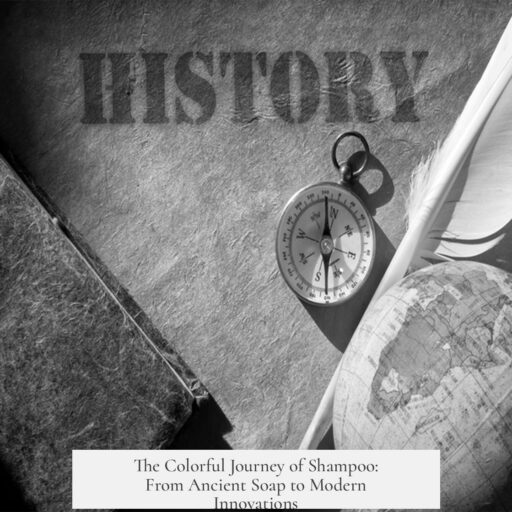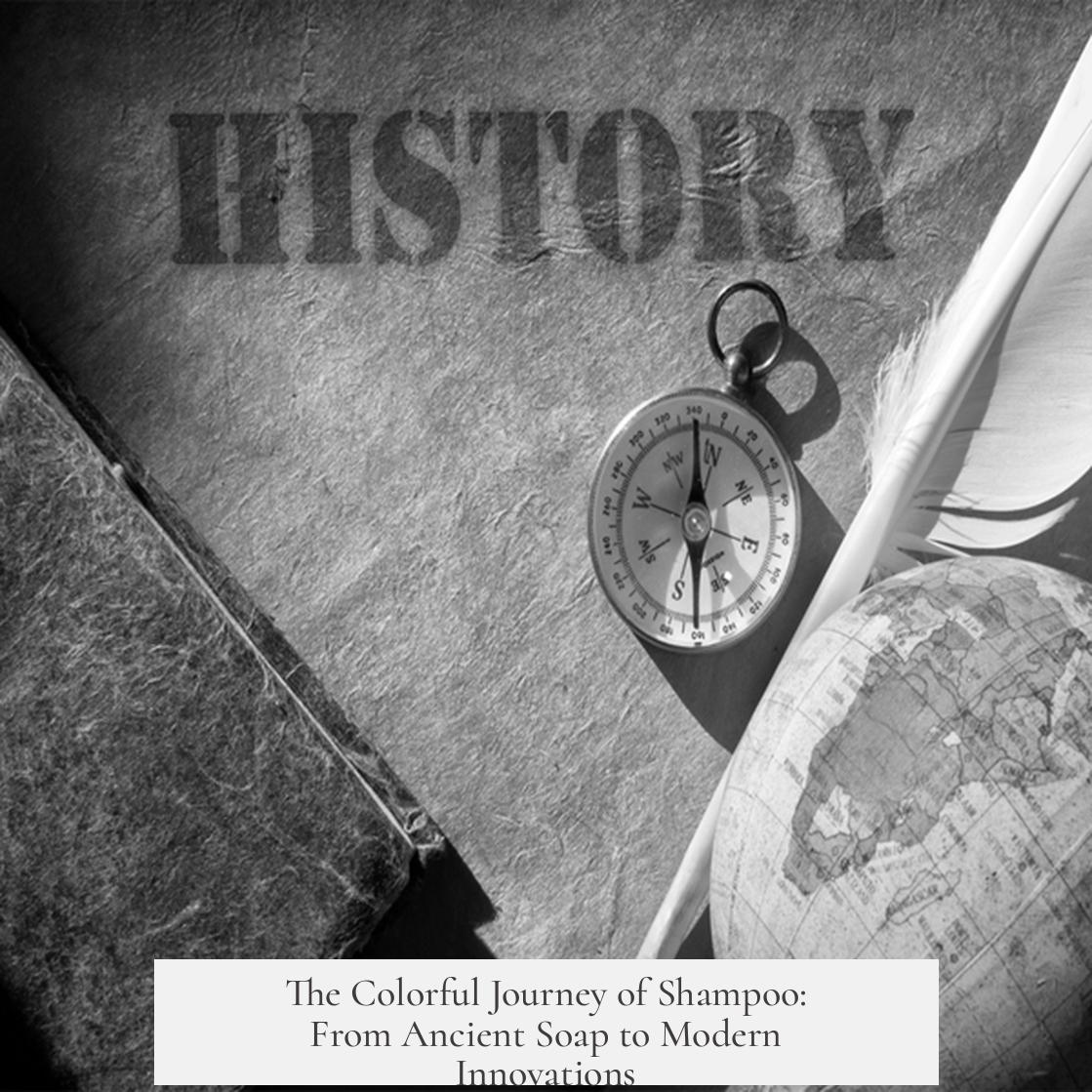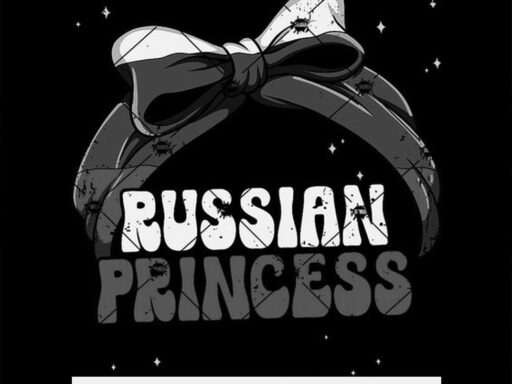The history of shampoo traces back thousands of years, evolving from ancient hair cleansing practices using natural oils and herbs to modern liquid formulations with synthetic surfactants. Early hair care involved cleansing and conditioning with natural substances, reflecting diverse cultural approaches to grooming and hygiene.
Approximately 7000 years ago, cosmetic care included hair treatments using oils, perfumes, and herbs. These substances helped maintain hair health and appearance. Ancient humans distinguished themselves by grooming with soaps made from animal fats or saponin-rich plants like soapberries. Such cleansing agents separated humans from animals, indicating emerging hygiene practices.
Oils prevented hair dryness, while herbs served roles akin to modern conditioners. In Egypt, lotus flowers conditioned hair, encouraged growth, repelled dirt and pests, and added shine. These treatments laid the groundwork for subsequent hair care methods.
Soap’s origin for hair cleansing began with Mesopotamians, who crafted Castile soap from olive oil, bay leaves, water, and lye. The soap’s name comes from Castile in Italy, where production reached prominence. European adoption of soap increased along trade routes such as the Silk Road, shifting from plant-based saponins to processed soap bars.
Soap was rarely applied directly as bars to hair. Instead, it often came shaved and boiled in water, producing a diluted liquid similar in consistency to shampoo. However, early soap had drawbacks. Its alkaline nature irritated eyes, was harsh on hair, and left a dull film that was difficult to rinse off. Users combatted these effects by using herbal rinses, oils, and liniments.
Herbal rinses served specific purposes, particularly promoting hair growth and preventing baldness. For instance, an 18th-century recipe combined labdanum, bears-grease, honey, powdered southernwood, ashes of Calamus roots, Balsam of Peru, and almond oil to create a hair growth liniment.
In addition to washing, hair styling often involved powdering and pomades. Pomade acted as a styling paste, conditioning hair while powder stiffened it for structured hairstyles popular in the 18th century. Powdering also functioned as a dry shampoo, absorbing oils to extend time between washes. The powders came in colors like white, pink, and blue, contributing to the misconception that wigs were worn universally in that era. After the decline of powdering, pomades and gentle soaps remained important. Brushing was emphasized as a conditioning and cleaning practice.
Shampooing as a concept was introduced to Britain in 1814 by Sake Dean Mahomed. He opened a business in Brighton offering shampooing via medicated vapor baths similar to Turkish baths. This method involved full-body massage using a hair glove to promote health. Mahomed’s 1838 book detailed treatments addressing conditions such as rheumatism, paralysis, asthma, and muscle pain. Shampooing here meant more than hair washing; it was a therapeutic massage ritual.
The modern shampoo recognizable today emerged in the early 20th century. Liquid shampoos replaced soap mixtures. A significant milestone occurred in 1930 with Procter & Gamble’s Drene shampoo. Drene was the first commercial shampoo formulated with artificial surfactants, improving cleansing without soap’s drawbacks. By the 1950s, Drene introduced a “silkening” version enhancing hair softness.
Despite modernization, recent trends revisit historical methods. There is renewed interest in shampoo bars, herbal rinses, and astringent treatments, reflecting a cyclic approach to hair care. The no-poo movement advocates foregoing liquid shampoos for more natural cleansing, echoing ancient practices.
| Era | Key Development | Details |
|---|---|---|
| 7000 years ago | Use of oils and herbs | Cosmetic hair care with natural oils and conditioning herbs like lotus flowers |
| Ancient Mesopotamia | Castile soap origin | Soap made from olive oil and lye used for body and hair cleansing |
| 18th century | Pomades and powdering | Hairstyling with pomade and powder, acting as dry shampoo |
| 1814 | Shampooing in Britain | Sake Dean Mahomed introduces medicated vapor bath with massage |
| 1930 | Drene shampoo | First shampoo with artificial surfactants, leading modern formulas |
- Hair cleansing began over 7000 years ago with oils and herbs.
- Ancient soap was harsh; herbal rinses balanced damage.
- Pomades and powders served both cleaning and styling functions.
- Sake Dean Mahomed introduced therapeutic shampooing in Britain.
- Modern shampoo emerged in the 20th century, starting with synthetic surfactant formulas like Drene.
The Colorful History of Shampoo: A Sudsy Journey Through Time
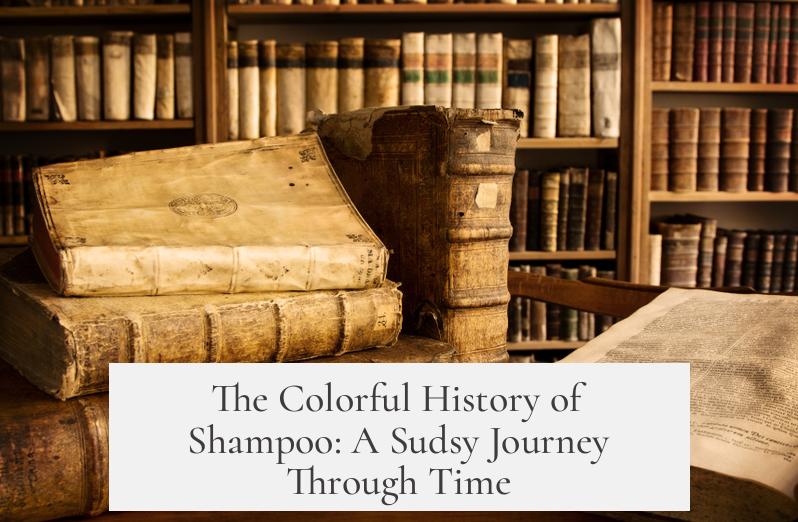
What is the history of shampoo? It’s a tale stretching back thousands of years—far before your morning bottle of liquid foam. Shampoo began as a blend of oils, herbs, and early soap concoctions, evolving through cultures and centuries to become the haircare staple we know today. But how did this everyday product come to be? Let’s wash through centuries of traditions, trials, and innovations to uncover the vibrant history of shampoo.
Imagine a world 7,000 years ago, where humans not only painted their faces with makeup but also cared for their hair using natural ingredients. Cosmetic use then wasn’t limited to just looking good; it involved treating hair with oils, perfumes, and herbs to condition and protect it. Ancient Egyptians loved lotus flowers for their hair, using them as natural conditioners that encouraged growth, shined strands, and even repelled pests.
Back then, grooming separated humans from animals. Early humans used soaps made from animal fats or plants rich in saponins, like soapberries, for cleansing. These natural soaps were primitive but effective, letting people wash grime away in rivers and streams. Though basic, this method laid essential groundwork for later developments.
Soap’s Voyage: From Olive Groves to Hair Baths
The innovation of soap as a hair cleanser took a fascinating turn with the Mesopotamians, who crafted Castile soap. Unlike earlier soaps, this one was elegantly created from olive oil, bay leaves, water, and lye. It was named after Castile, a region where soap-making flourished. As this soap journeyed through Europe along the Silk Road, it transformed personal care, becoming a coveted commodity.
But soap for hair wasn’t as simple as slapping a bar on your head. Early users shaved soap, boiled it in water to make a thinner, shampoo-like liquid. Sounds fancy, right? However, this concoction wasn’t always kind to hair. The harsh lye base irritated the scalp and eyes and left a stubborn dull film on hair strands that resisted rinsing.
Here’s where herbs played the hero again. People brewed herbal rinses and liniments—to soothe the scalp, encourage hair growth, and prevent baldness. One old recipe from 1784 calls for labdanum, bear’s grease, honey, Southernwood, ashes of Calamus Aromaticus roots, Balsam of Peru, and almond oil. It’s a robust, natural hair potion! Though, mixing that at home might seem more like a chemistry experiment than a beauty routine.
Powder, Pomade, and the Art of 18th Century Haircare
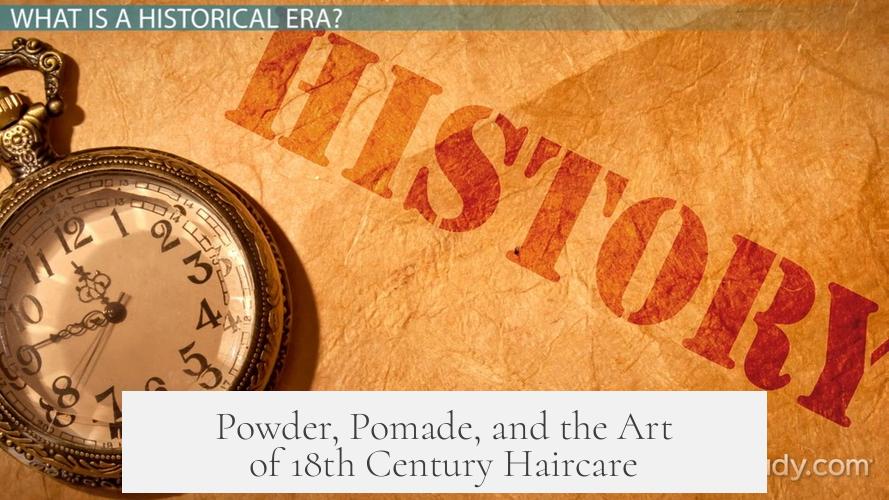
Fast forward a few centuries, and the haircare game takes a stylish twist. Powdering hair was a big deal in the 1700s. People combined it with pomade—a greasy styling paste—to mold their elaborate hairstyles into architectural wonders that could rival modern skyscrapers. Pomade functioned much like today’s conditioning styling creams, adding texture and hold.
Interestingly, powdering was not just about aesthetics—it also doubled as a cleaning method. Like modern dry shampoo, hair powders helped absorb oils and stretched time between washes. Some powders boasted tinting shades like pink and blue, creating gray or white hair illusions. This colorful trend likely fueled the myth that everyone in the 18th century wore wigs. Spoiler: They did not.
As powdering waned in popularity, pomades remained popular, and gentle soaps plus frequent brushing took over as the main cleaning methods. Conditioning oils and herbal rinses continued to be household staples, showing how old practices persisted in subtler forms.
Enter Sake Dean Mahomed: Shampoo Goes British
Did you know the word “shampoo” has Indian roots? Thanks to Sake Dean Mahomed, a visionary who introduced shampooing to Britain. In 1814, he and his wife opened a “shampooing” vapor bath business in Brighton. Unlike mere hair washing, his service resembled a Turkish bath combined with body massage.
Mahomed’s method was more medicinal than cosmetic. His 1838 book detail shows how shampooing treated ailments from asthma to rheumatism, muscle pain, and even paralysis. The treatment involved rubbing the whole body with a hair glove until glowing red — a spa day far different from a quick hair rinse.
This early association of shampoo with health and wellness hints that haircare was about more than looking good; it was part of holistic healing.
The Rise of Modern Shampoo: From Soap Bars to Liquid Innovation
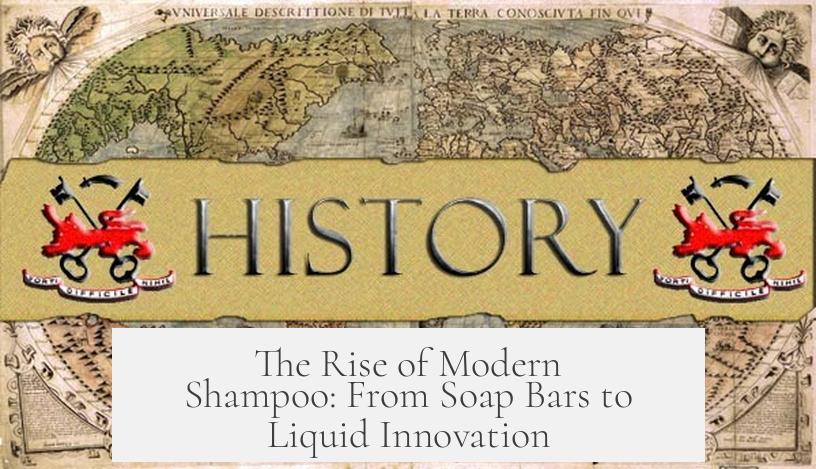
Modern shampoo as we know it starts its tale in the 20th century. The big leap came with liquid shampoo products entering the market. While soaps dominated haircare for centuries, these new shampoos were gentler and easier to use.
The breakthrough champion? Drene shampoo. Launched in the 1930s by Procter & Gamble, Drene was the first shampoo to include artificial surfactants instead of diluted soap. This leapwise formula made hair washing more effective and less taxing on hair. By the 1950s, Drene even launched a “silkening” version, showing how innovation was becoming more specialized.
Today, while liquid shampoos dominate, some haircare enthusiasts are revisiting earlier traditions. Innovative fads like shampoo bars and “no-poo” methods (using rinses and astringents rather than chemical shampoos) are making waves. It’s as if history’s old tricks circle back, reminding us that sometimes simpler, natural approaches resonate best.
Why Does Knowing Shampoo’s History Matter?
Understanding shampoo’s history shines a light on how human care evolved from primitive oils and herbs to sophisticated formulas. It helps us appreciate the advances that protect our hair health while highlighting the recurring themes of natural ingredients and holistic care.
Ever tried a shampoo bar or herbal rinse? Perhaps your modern haircare routine benefits more from age-old wisdom than fancy marketing. The history of shampoo isn’t just about cleaning hair; it’s about culture, health, and continuous reinvention.
Here’s a Quick Recap:
- 7000 years ago: Oils and herbs treat hair (think lotus and perfumes).
- Ancient soaps: Made from animal fats or plant saponins, first cleansing agents.
- Castile soap: Olive oil-based, spread through Europe via the Silk Road.
- Harsh early soap use: Led to herbal rinses, liniments, and conditioning blends for hair health.
- 18th century: Powder and pomade transform hair styling and cleaning methods.
- 1814: Sake Dean Mahomed popularizes shampooing vapor baths in Britain.
- 1930s: Drene shampoo introduces surfactants, modernizing hair washing.
- Today: Revival of natural, no-poo techniques while conventional shampoos remain popular.
What can we take away from this wet and wild ride through time? Shampooing isn’t just about squeaky clean hair; it tells a story of innovation, culture, and human desire to care for ourselves. So next time you lather up, remember you’re part of a tradition thousands of years in the making.
What were the earliest methods of cleaning hair before modern shampoo?
People used oils, perfumes, and herbs to treat hair. Ancient cleansers included soaps made from animal fats or plants with saponins like soapberries. Oils helped prevent dryness, while herbs conditioned and added shine.
How did early soap-based hair cleansing differ from today’s shampoo?
Early soap was made from olive oil and lye, and was diluted by boiling in water. This thin solution was harsher than today’s shampoos, often causing eye irritation and leaving a dull film on hair.
Who introduced shampooing to Britain, and what was its original form?
Sake Dean Mahomed introduced shampooing in Britain in 1814 with a medicated vapor bath and massage. It resembled a Turkish bath and was considered a medical treatment rather than just hair cleansing.
What was significant about Drene shampoo in the history of shampoo?
Drene, launched in 1930 by Proctor & Gamble, was the first shampoo to use artificial surfactants instead of diluted soap. It marked a major shift toward milder and more effective hair cleansers.
How have modern shampoo trends connected to ancient hair care practices?
Recent trends like shampoo bars and the no-poo method echo older techniques. These focus on using rinses, astringents, and less harsh cleansing products, similar to methods from centuries ago.
